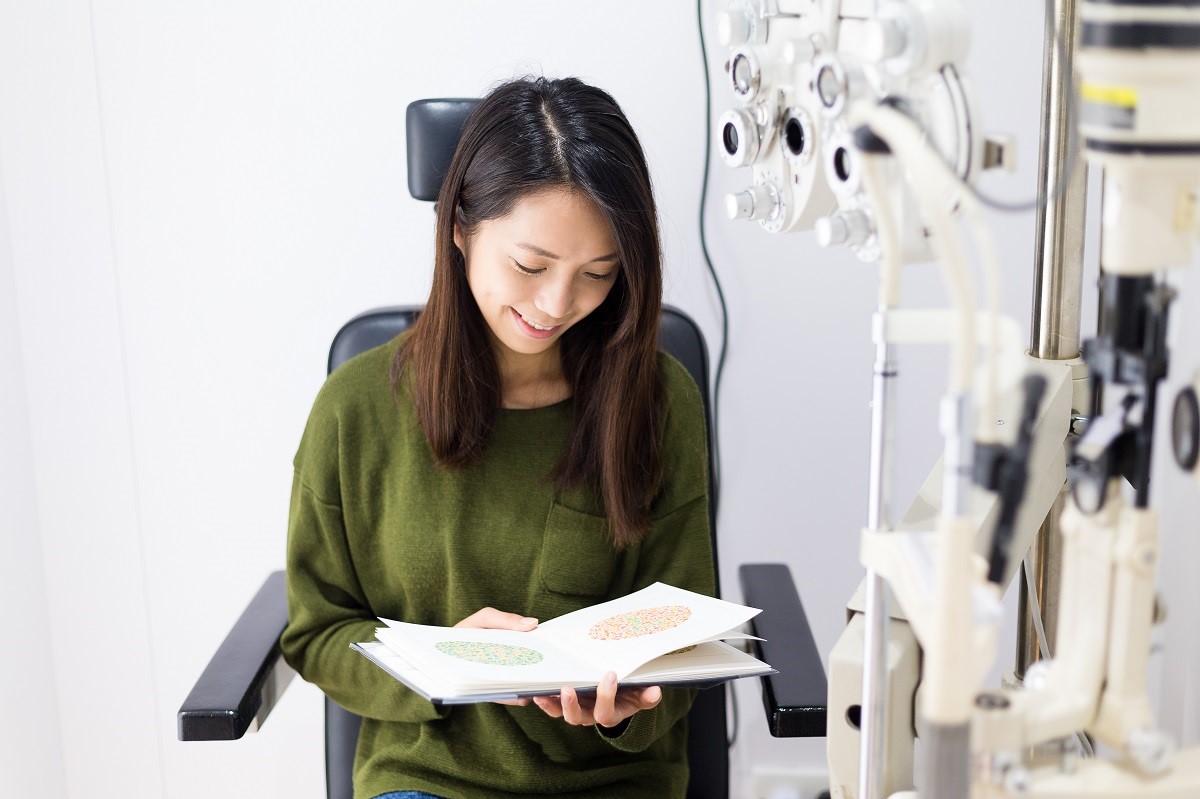
Colour blindness: what is it?
Colour blindness – or dyschromatopsia – is a condition that leads the sufferer to develop a permanent inability to recognise and perceive colours
This altered perception affects – depending on the case – all degrees of the colour scale or only some of them.
The term ‘colour blindness’ is named after John Dalton who first – in 1794 – described this particular disorder in his article ‘Extraordinary facts connected with colour vision’.
The scientist himself suffered from red-green dyschromatopsia or – more precisely, as will be seen later – from deuteranopia.
Colour blindness: what it is caused by and who suffers from it
Colour blindness depends on a recessive mutation found in the X chromosome, so it is predominantly genetic in nature.
It is therefore, in most cases, present from birth in the individual.
As is to be expected, male individuals are more likely to be affected because, being carriers of only one X chromosome, if this appears mutated, the individual is much more likely to manifest colour blindness.
Female individuals, having a ‘spare’ X chromosome in their genetic make-up, are less likely to develop colour blindness.
Colour blindness can also be acquired as a result of illness or intoxication from drugs such as hydroxychloroquine, chemicals such as styrene and organic solvents.
Colour-blindness or achromatopsia is to be distinguished from cerebral achromatopsia where the inability to distinguish colours results from a brain disease that can also be acquired.
Colour blindness: how it is classified
Colour blindness is a condition that combines four different ways of perceiving colour: achromatopsia, protanopia, deuteranopia, tritanopia.
Achromatopsia
People with achromatopsia have monochromatic vision, seeing the world in black and white, unable to perceive red, yellow or green.
In addition to the inability to distinguish colours, there is often low visual acuity.
Protanopia and protanomalia
Those with protanopia are completely insensitive to the red colour range; those with protanomalia only have insufficient sensitivity to the red colour range.
Deuteranopia and deuteranomaly/teranomaly
Those with deuteranopia are completely insensitive to the green colour gamut; those with deuteranomaly or teranomaly have only insufficient sensitivity to the green colour gamut
Tritanopia and tritanomaly
Those with tritanopia are completely insensitive to the blue colour range; those with tritanomalia are only insufficiently sensitive to the blue colour range.
Colour blindness: the diagnosis
The diagnosis of colour-blindness takes place around the age of three, an age at which the child has generally already become aware of the colours around him and is able to identify them by a specific name.
Subjecting a child under the age of three to a diagnosis of colour blindness could be misleading for the success of the test.
Diagnosis is performed by the ophthalmologist using Ishihara tables
The so-called Ishihara test was devised by the eponymous physician – a professor at the University of Tokyo – and first published in 1917.
This test uses 38 pseudo-isochromatic numerical tables to be displayed in sequence.
In these tables, the numbers and the background tend to blur together, especially for those who actually suffer from colour blindness.
For children, the numbers are replaced by a path to be traced or followed with the finger.
In order to investigate further and study exactly what form of dyschromatopsia the patient is suffering from, it is also advisable to perform the Farnsworth test, which consists of placing a series of coloured tiles in the correct colour sequence.
In addition, some software has been developed – which can be downloaded free of charge onto one’s smartphone or tablet – that allows an initial suggestion of possible defects in colour perception.
A definite diagnosis, on the other hand, can only be made after a comprehensive eye examination by an ophthalmologist using the tests already mentioned.
Is there a cure for colour blindness?
At present, colour blindness is unfortunately not curable.
At an experimental level, a study is in the field using gene therapy to cure colour blindness as, to all intents and purposes, the defect is genetic in nature.
There are several clinical trials based on integrating the defective gene (CNGB3) with a healthy one.
At the moment, the trials involve a few patients with severe forms with associated low vision, preferably monogenic.
The existence of different types of colour blindness, as we have seen, whose treatment would involve replacing not just one gene, but multiple genes, constitutes a limitation of gene therapy that is only able to carry one defective gene.
Consequently, there are still no proven effective therapies to combat colour blindness.
Read Also
Emergency Live Even More…Live: Download The New Free App Of Your Newspaper For IOS And Android
Diseases Of The Ocular Conjunctiva: What Are Pinguecula And Pterygium And How To Treat Them
What Is Ocular Pterygium And When Surgery Is Necessary
Vitreous Detachment: What It Is, What Consequences It Has
Macular Degeneration: What It Is, Symptoms, Causes, Treatment
Conjunctivitis: What It Is, Symptoms And Treatment
How To Cure Allergic Conjunctivitis And Reduce Clinical Signs: The Tacrolimus Study
Bacterial Conjunctivitis: How To Manage This Very Contagious Disease
Allergic Conjunctivitis: An Overview Of This Eye Infection
Keratoconjunctivitis: Symptoms, Diagnosis And Treatment Of This Inflammation Of The Eye
Glaucoma: What Is True And What Is False?
Eye Health: Prevent Conjunctivitis, Blepharitis, Chalazions And Allergies With Eye Wipes
What Is Ocular Tonometry And When Should It Be Done?
Dry Eye Syndrome: How To Protect Your Eyes From PC Exposure
Autoimmune Diseases: The Sand In The Eyes Of Sjögren’s Syndrome
Dry Eye Syndrome: Symptoms, Causes And Remedies
How To Prevent Dry Eyes During Winter: Tips
Blepharitis: The Inflammation Of The Eyelids
Blepharitis: What Is It And What Are The Most Common Symptoms?
Stye, An Eye Inflammation That Affects Young And Old Alike
Diplopia: Forms, Causes And Treatment


